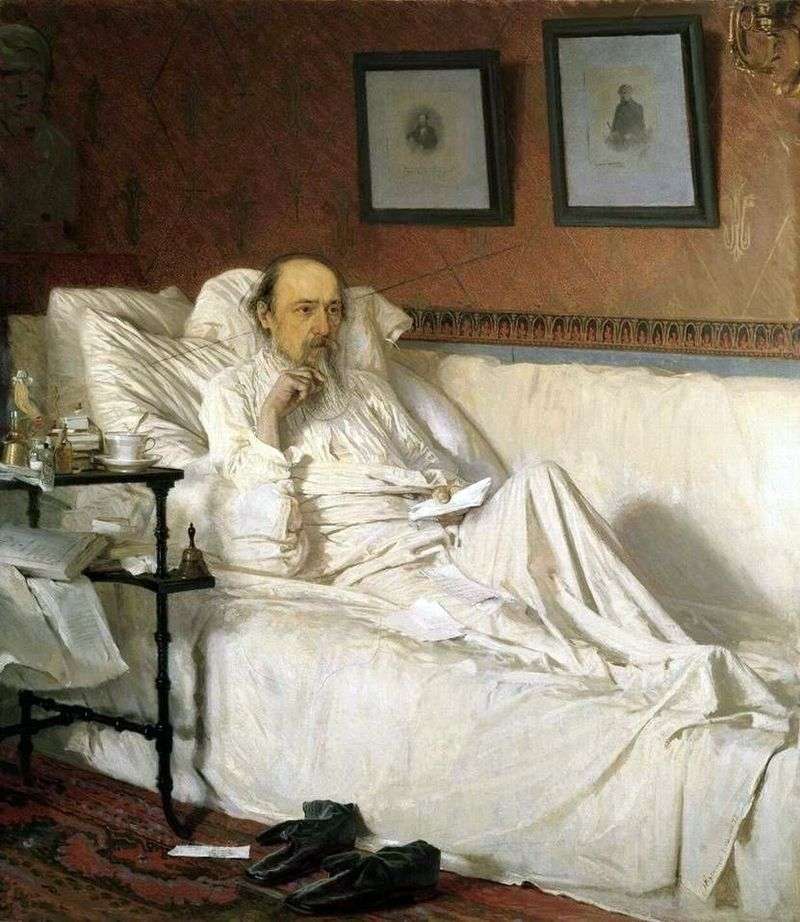
The order of the portrait of the Russian classic Nikolai Alekseevich Nekrasov came from Kramskoy from Pavel Tretyakov – the great patron wanted to collect portraits of all outstanding people of his time, and, of course, did not bypass the famous poet, editor, publicist side.
In 1875, Nekrasov discovered an incurable disease – intestinal cancer, and by 1877 it became clear that his days were numbered. Then Pavel Tretyakov made an urgent order to Kramskoy.
The artist began to work, deciding to write a sick writer lying in pillows, which he received a strong refusal from the customer – a great classic can not appear in such a weak position. “The great fighter,” as Nekrasov was then called, must be depicted accordingly. Kramskoy fulfilled the wishes of the customer and created a breast portrait, which was adopted by Tretyakov.
However, upon the completion of the order, Kramskoy decided to write the canvas in accordance with her creative plan, which will enter the world artistic culture, as “Portrait of Nekrasov in the” Last Songs. “The picture never saw the portrait – the painter finished it, when Nekrasova was no longer in living.
At first, the picture was to abound with many things and trifles, which Nekrasov loved. So, for example, the space of the canvas was supposed to contain a cabinet with weapons, as a reminder of the hobby, the favorite dog of the poet. However, soon, Kramskoy will remove the “extra” details that interfere with the perception of the heroic image, making the picture more in format than originally conceived.
Having carefully examined the picture, you can tell a lot about her hero – on the right edge of the work you can see the bust of Belinsky, whom Nekrasov honored his whole life as his teacher and an outstanding man, and on the table of the volume “Contemporary”, a magazine to which the poet devoted much of his life, portraits of Mickiewicz and Dobrolyubov speak of his interests and convictions.
Kramskoy obtained an amazing portrait, combining both chamber and true grandeur, even monumentality. We see the Big Man, an outstanding figure in the literary word, who was tortured by the disease. His physical strength at the end and about it says literally everything in his guise, but at the same time the spiritual power is still glowing, not running out on the edge of the grave.
The painter put a false date in the corner of the canvas – March 3. It was on this day that Nekrasov read to Kramskoy his poem “Bayushki-bai”, which deeply impressed the painter and became prophetic for the writer.
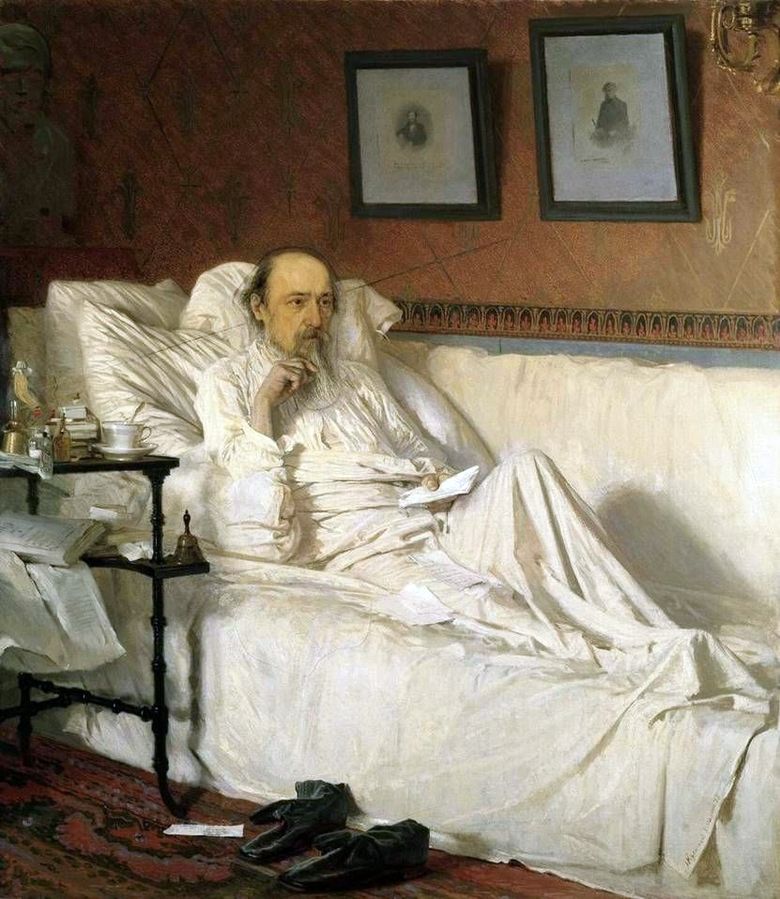 Nekrasov pendant les dernières chansons – Ivan Kramskoy
Nekrasov pendant les dernières chansons – Ivan Kramskoy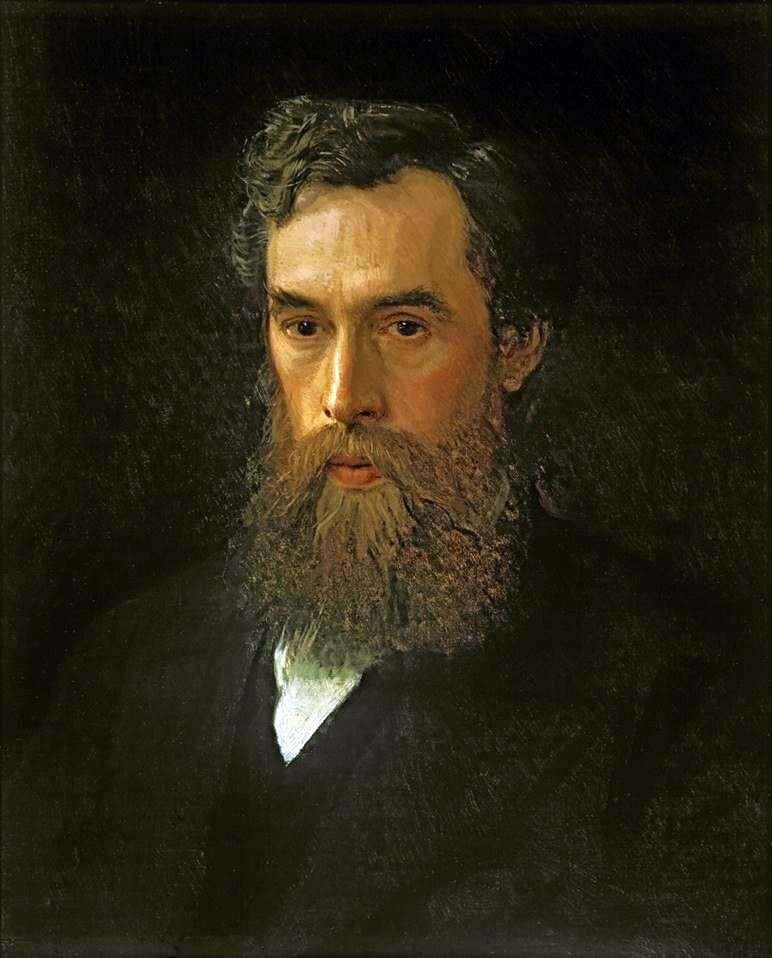 Portrait of Pavel Mikhailovich Tretyakov by Ivan Kramskoy
Portrait of Pavel Mikhailovich Tretyakov by Ivan Kramskoy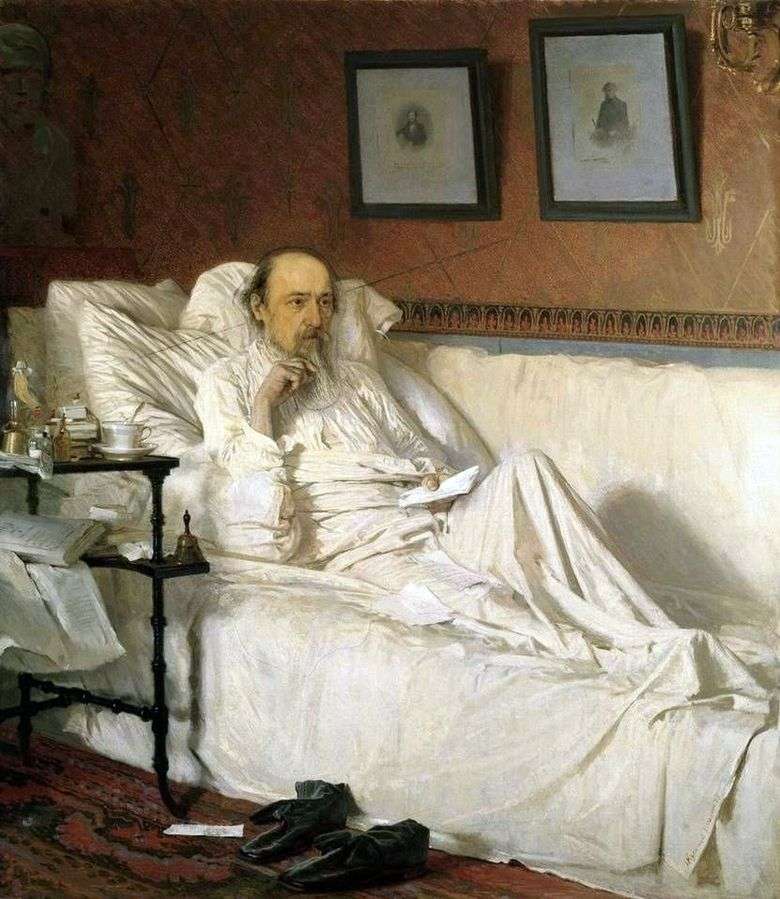 Nekrasov durante las últimas canciones – Ivan Kramskoy
Nekrasov durante las últimas canciones – Ivan Kramskoy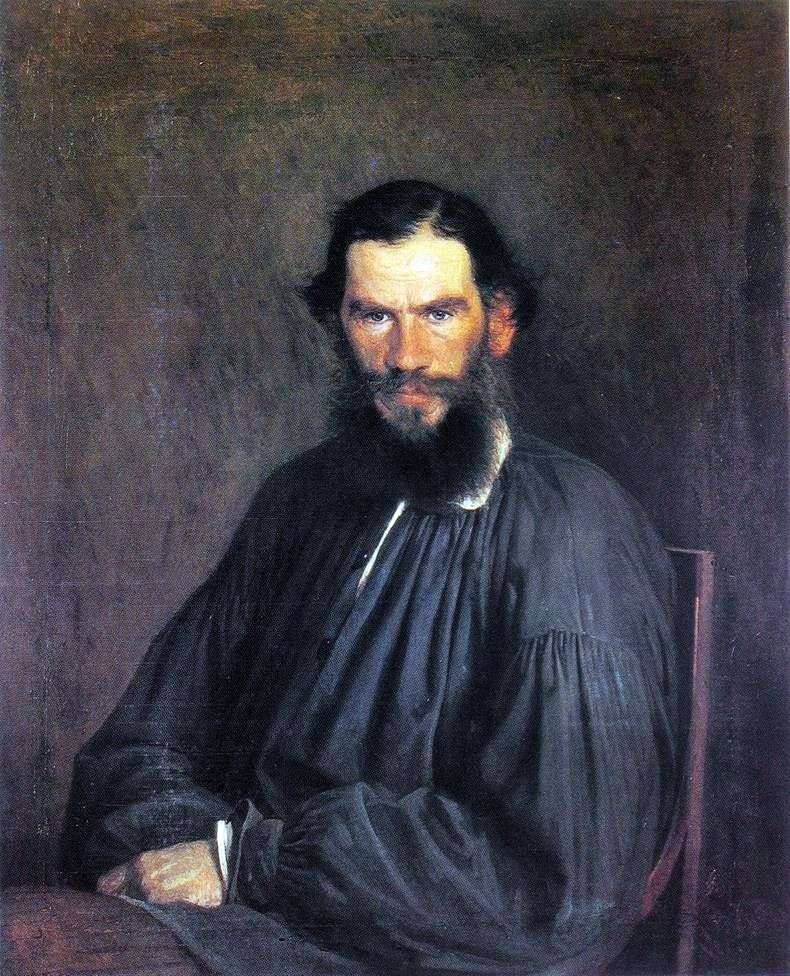 Portrait of Leo Tolstoy by Ivan Kramskoy
Portrait of Leo Tolstoy by Ivan Kramskoy Christ in the desert by Ivan Kramskoy
Christ in the desert by Ivan Kramskoy Portrait of A. Suvorin by Ivan Kramskoy
Portrait of A. Suvorin by Ivan Kramskoy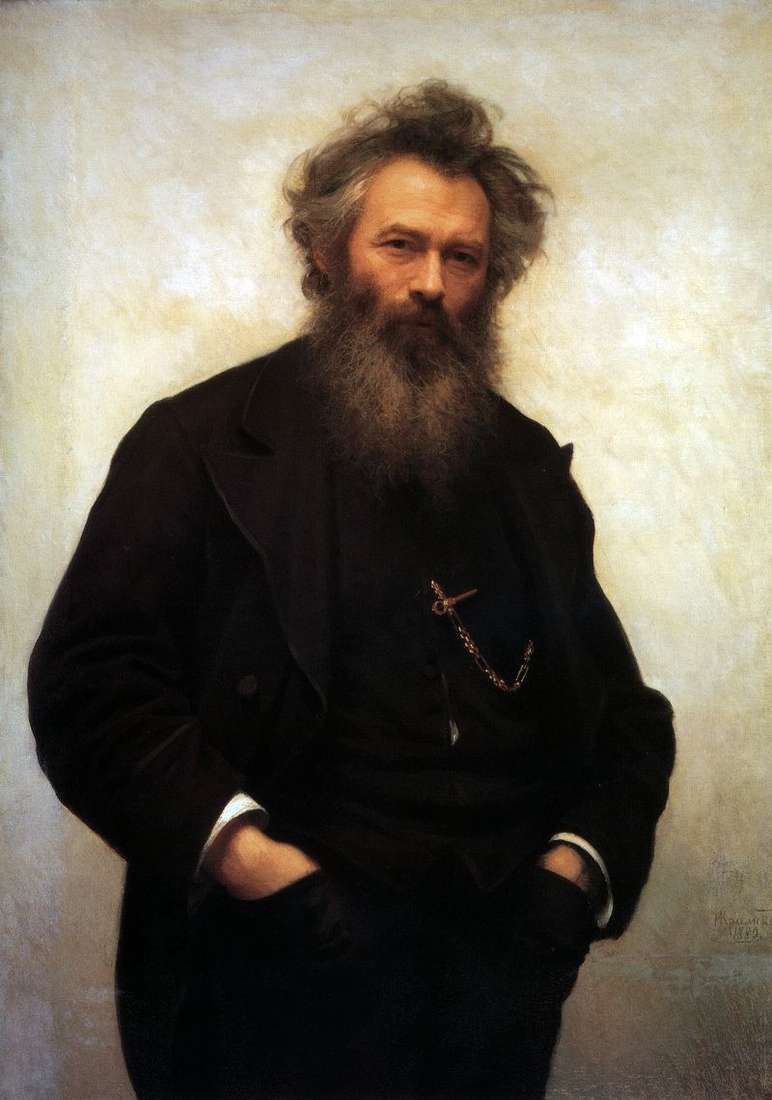 Portrait of Ivan I. Shishkin by Ivan Kramskoy
Portrait of Ivan I. Shishkin by Ivan Kramskoy Portrait of Solovyov by Ivan Kramskoy
Portrait of Solovyov by Ivan Kramskoy